There are countless watches that I find remarkably beautiful or deeply fascinating from a technical standpoint, but can’t picture myself actually wearing. My capacity to truly love such timepieces can only exist within an almost academic realm, similar to how one might love a famous painting or admire the avant-garde architecture of a skyscraper in Dubai or the audacious lines of a supercar. However, these objects tend to exist apart from real life – at least mine – and can only be engaged with as such.
This is part of the reason why I’ve always been drawn to Rolex. Whether in their most highbrow, dressiest guises or the brand’s most function-forward, utilitarian designs, Rolex watches always maintain a certain degree of everyday wearability. The marque is arguably the quintessential manufacturer of timepieces that can be worn all day and every day for the rest of one’s natural life. I’m lucky in that I’ve been able to spend the majority of my career writing about watches, and I’ve had the opportunity to handle many of Rolex’s most famous and celebrated models and rarest references. After many years in the business and countless days experiencing the most coveted watches around in-the-metal, I’m ready to admit that my absolute all-time favorite watch is the Rolex Explorer II ref. 1655.
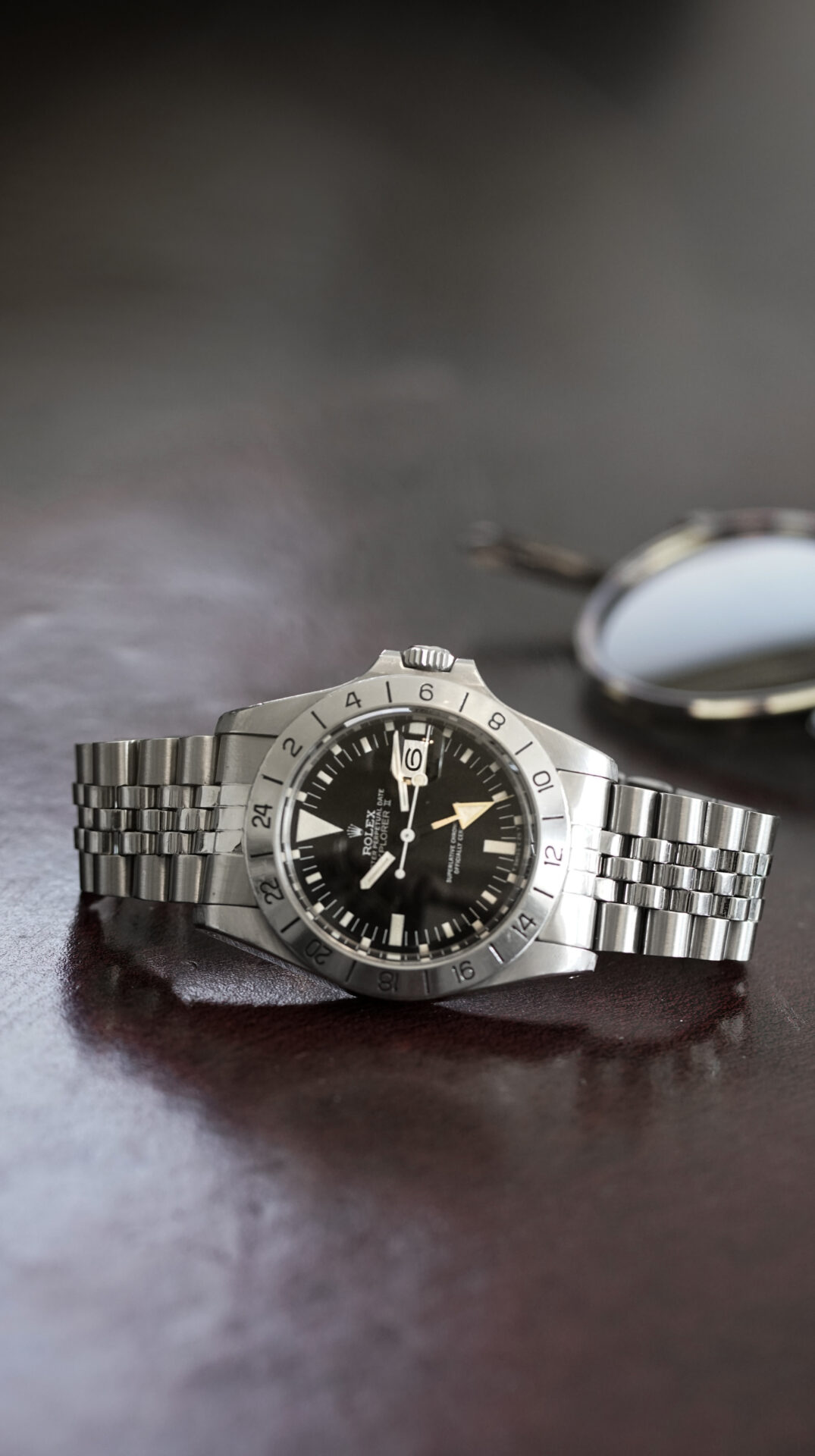


At first glance, the Rolex Explorer II 1655 almost looks like an instrument intended for aviation or space flight, and the fact that it was launched in 1971 (less than two years after the moon landing) might partially explain its vaguely aeronautical aesthetic. However, Rolex originally created the Explorer II for arguably the polar opposite audience: Professional cave explorers working deep underground in total darkness. Now, I’ve met a lot of people with unusual jobs over the years – including a couple of saturation divers who have owned and used Rolex Sea-Dweller watches on the job. However, I have yet to encounter a single full-time speleologist.
After producing watches for everyone from pilots and scuba divers to race car drivers and nuclear scientists, it almost seems that Rolex had run out of fresh ideas by the time the Explorer II arrived in the early 1970s. For decades prior, Rolex was committed to producing highly specialized and innovative timepieces that were designed to function in extremely unique and demanding environments. So, it’s fair to assume that a reference designed specifically with the needs of cave explorers living and working in total darkness might be the most obscure and potentially useless model to the general public that Rolex has ever produced. However, that is exactly the type of thing that speaks to my imagination and it is specifically the ref. 1655’s complete absurdity and ultra niche-focused design that has made me fall in love with it.
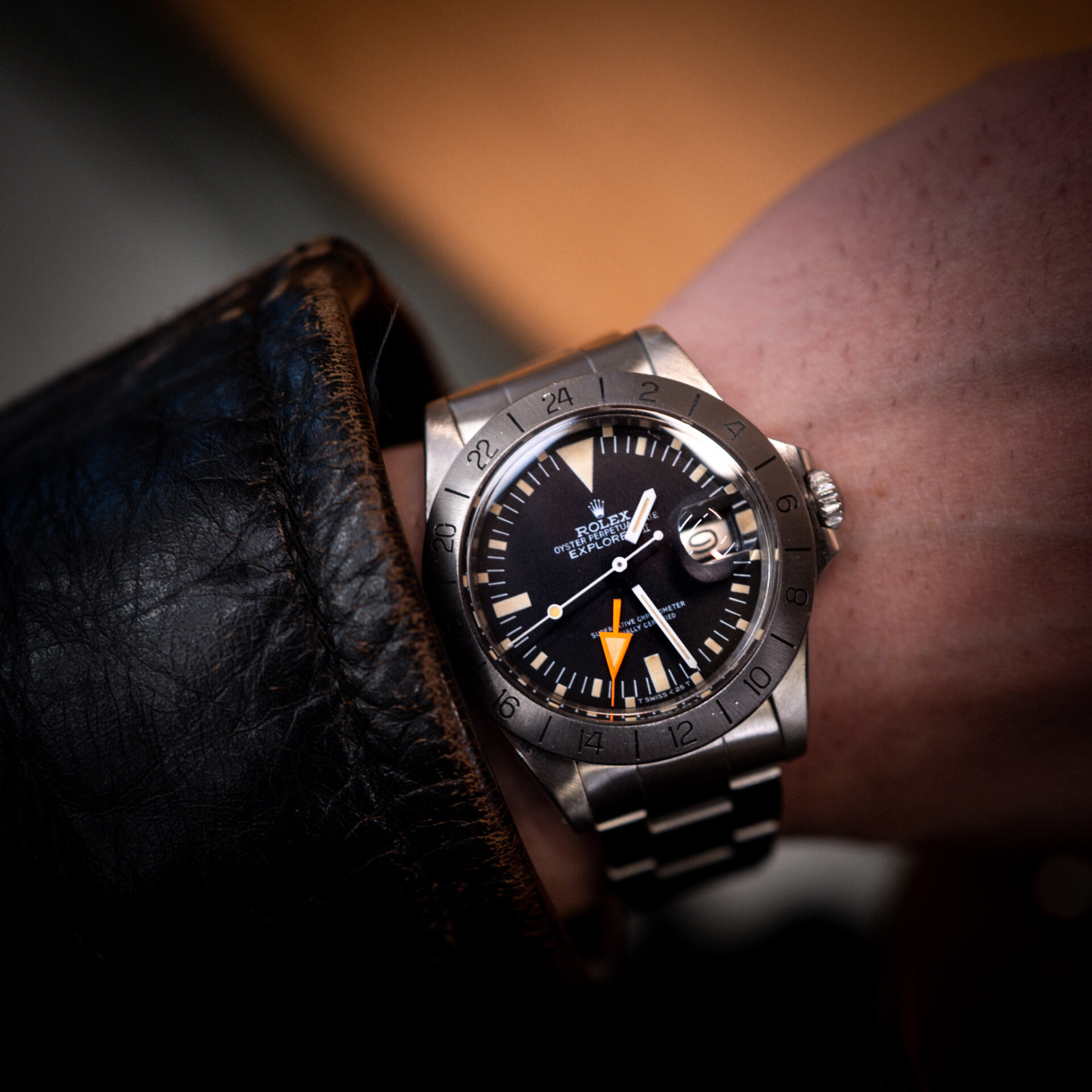
Rolex still produces the Explorer II, but the reference 1655 is the only iteration that ever truly followed the brand’s original vision for the watch. When Rolex first designed the Explorer II, the goal was to create a timepiece for cave explorers that could provide them with a clear indication of AM versus PM hours. The rationale behind this newly-identified timekeeping need was that cave explorers would be operating for multiple days at a time without any sunlight to serve as a reference point. Therefore, the purpose of the signature strikingly bright orange, oversized 24-hour hand on the reference 1655 is not to display a secondary timezone like on subsequent iterations of the Explorer II, but rather to serve as a prominent 24-hour display for the time of day.
Once you start thinking about the Rolex Explorer II as a 24-hour watch, the entire design language of the reference 1655 makes a whole lot more sense. The dial (my single favorite feature) is primarily intended to function as a 24-hour display and be used in conjunction with the watch’s large, arrow-shaped, 24-hour hand. The small offset squares and rectangles that create a checkerboard-like appearance within the minute track are actually hour markers that form a 24-hour scale around the periphery of the dial. It’s an exceptionally clever design to solve a problem very, very few individuals actually had.
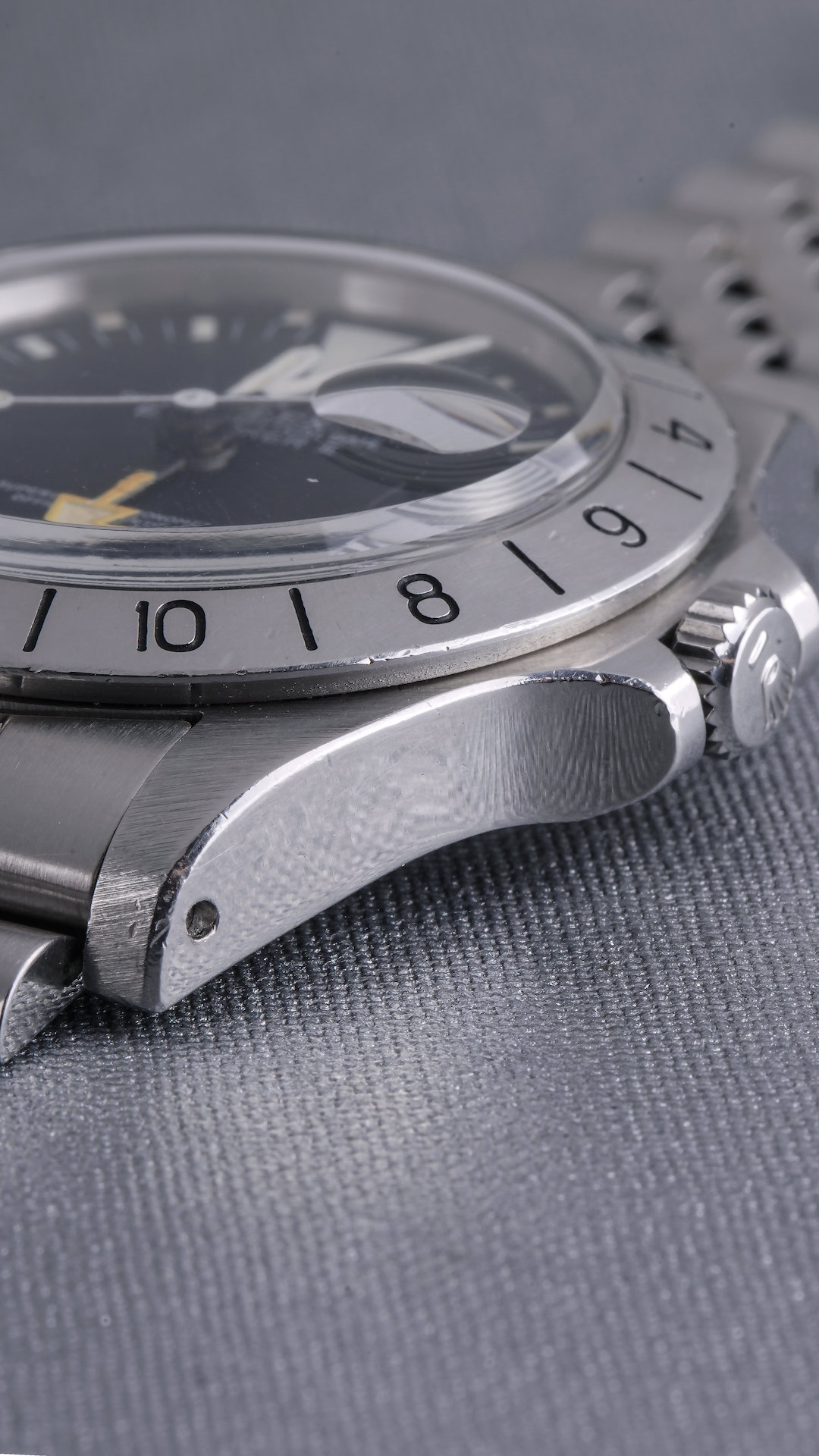
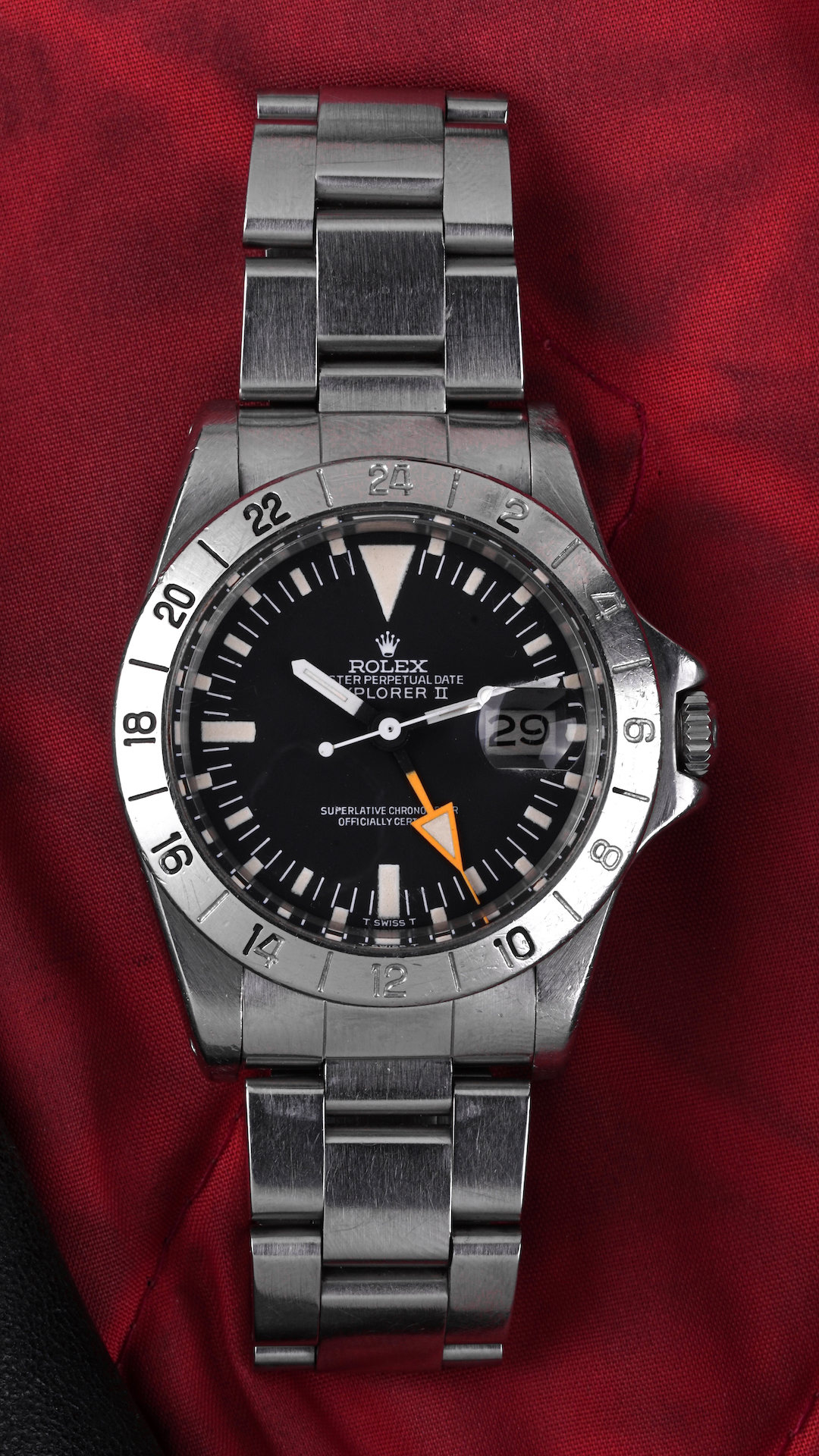
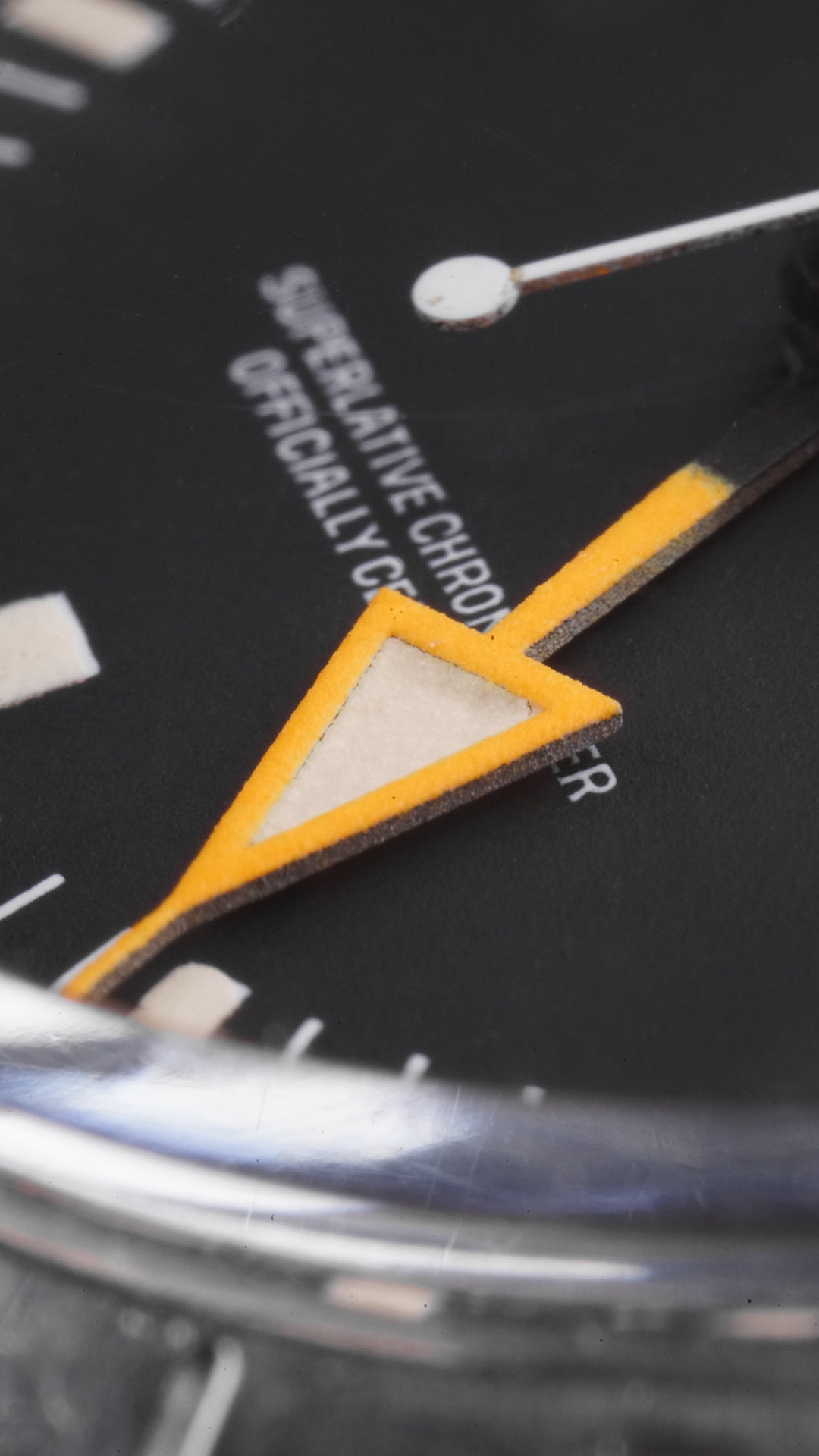
Additionally, the longer set of markers that are positioned closer to the interior of the dial are designed to function like the indexes on a traditional watch dial. This means they can either be used as five-minute markings when referencing the time, or as the hour markers when reading the display in a 12-hour format. On top of that, all of these markings were originally finished with tritium, giving the Rolex Explorer II ref. 1655 the ability to display the time in a 24-hour format, with a dedicated glowing marker for each one of the 24 hours displayed on its dial.
Although this unusual design is undeniably quite brilliant, it isn’t ideal unless you are specifically viewing the watch in the dark and primarily interested in reading the time in a 24-hour format. Consequently, the dial of the reference 1655 originally drew criticism for being somewhat difficult to read, and the watch struggled to resonate with the general public. Between its unexpected design queues and remarkably small, yet specific target demographic, the reference 1655 was seemingly always destined to be a bit misunderstood.
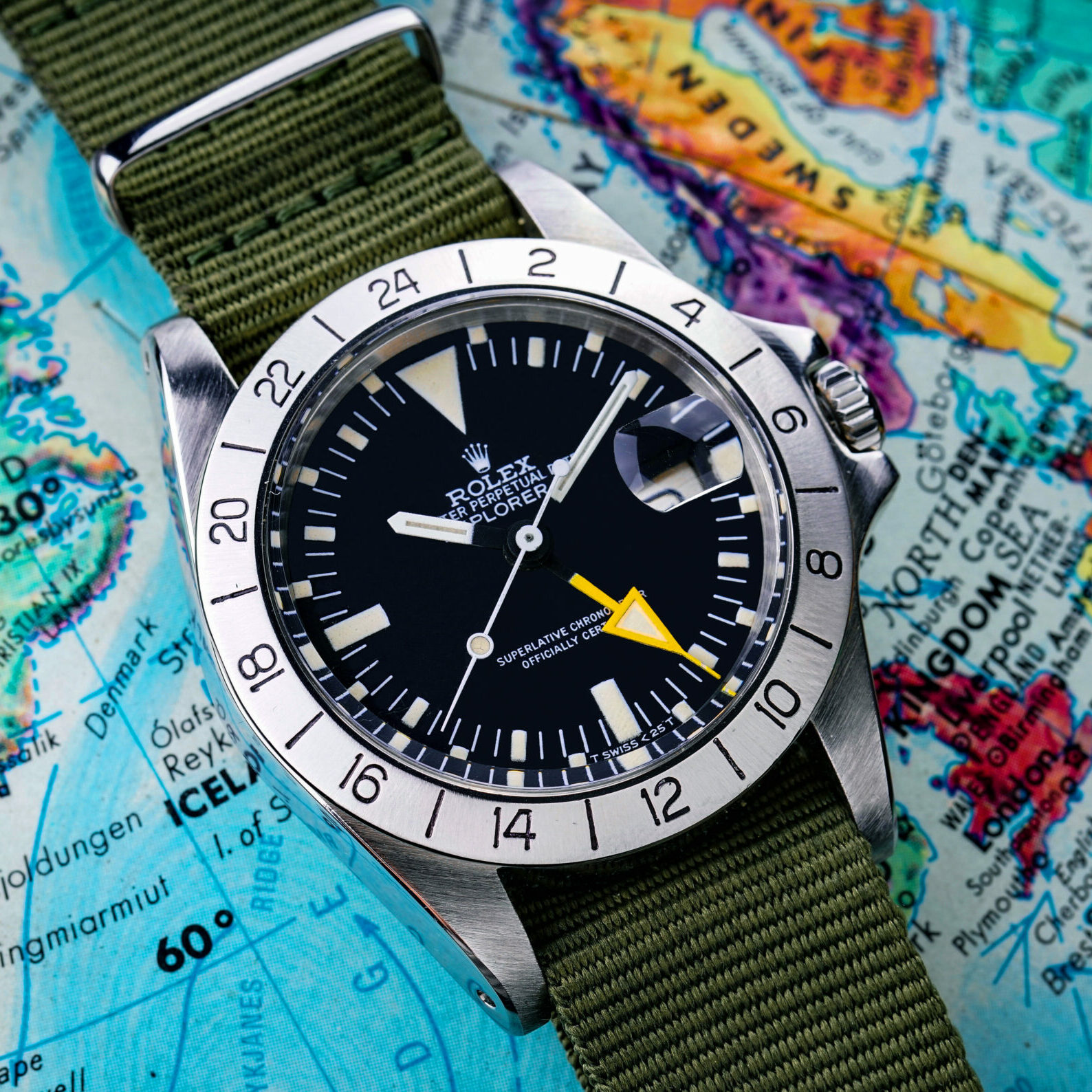
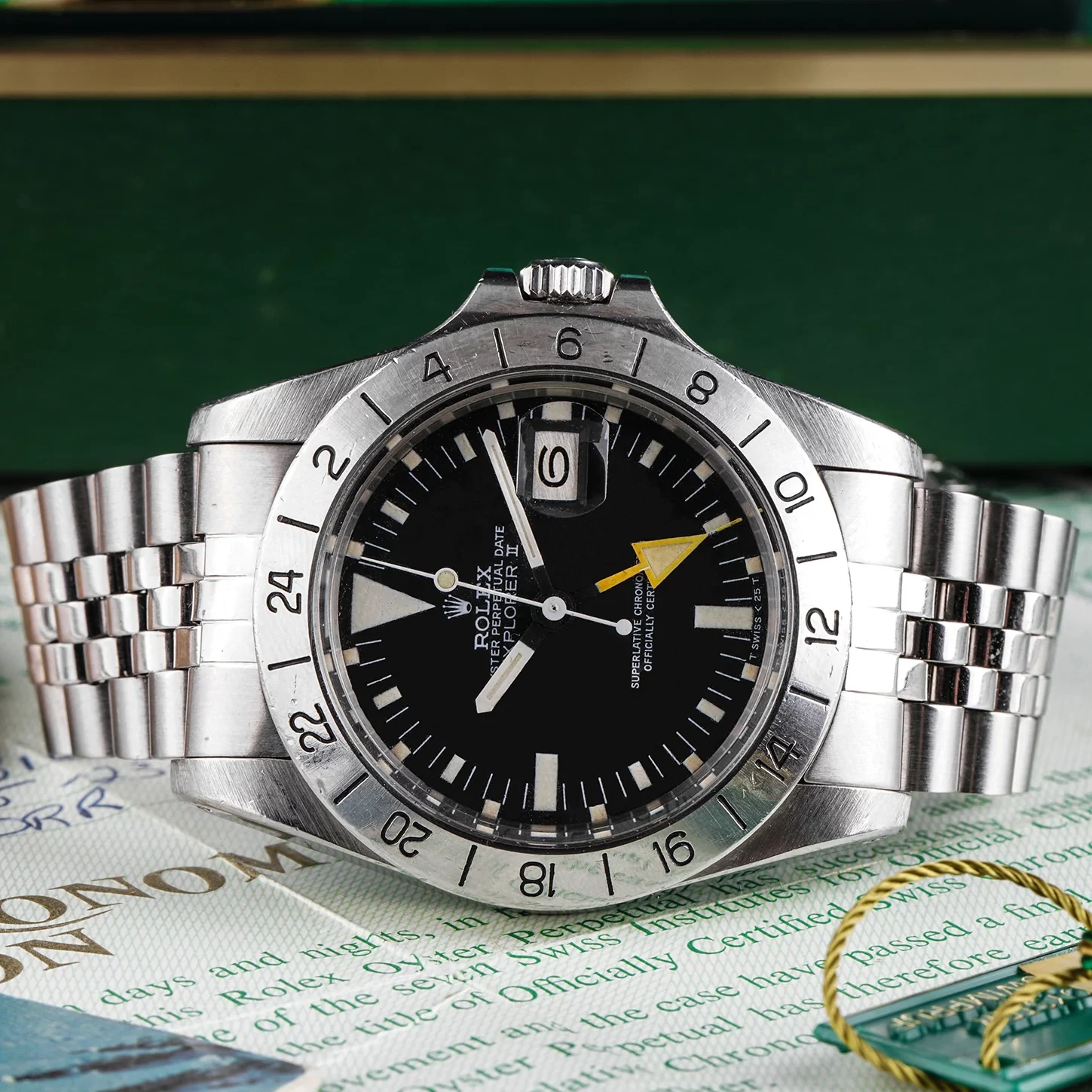
Beyond my fascination with the Rolex Explorer II and its wonderful, yet underappreciated design, the simple fact is that the reference 1655 is truly unique among the whole of watches that Rolex has ever produced. The Explorer II range has always been a collection of oddballs within Rolex’s lineup, but even compared to other Explorer II models, the reference 1655 stands out as being special and downright unusual.
The Explorer II 1655 is the only Rolex watch to ever feature this unique style of 24-hour dial. When the reference 1655 was discontinued in the mid-1980s, Rolex also gave up entirely on the idea of having a dial with a 24-hour display, leaving that task to the watch’s engraved steel bezel. All subsequent editions of the Explorer II have featured dials that largely resemble the style of dial found on the Submariner or GMT-Master, and while they do benefit from improved legibility when viewing the time in a 12-hour format, they entirely lack what originally made the Rolex Explorer II so unique both visually and functionally.
On top of that, the reference 1655 is also the only Explorer II to ever be fitted with an acrylic crystal. It also happens to be the only one to feature a matte dial, the only one with a 39mm case diameter, and also the only one to not include a Mercedes-style handset. Furthermore, the ref. 1655 is also the only version of the Explorer II that has lines rather than arrows between the numerals on its bezel, and it’s also the only one powered by a movement that doesn’t have independently-adjustable hour hands. All things considered, subsequent generations of the Rolex Explorer II are more alike than they are different, yet the reference 1655 truly stands out as being unique.
Although the Rolex Explorer II ref. 1655 wasn’t all that popular upon its initial release, it has since become one of the cult icons from the brand’s back catalog. The original model from the 1970s occupies such a special place within the hearts of collectors that Rolex even revived its bright orange 24-hour hand in 2011 and has included it on the last two generations of Explorer II watches. However, these new models measure 42mm in diameter and more importantly, they lack the original’s unique 24-hour dial. I’d like to say that I would be content owning a modern Explorer II, but they ultimately lack the features I really love about the original reference 1655, and the new ones simply don’t check the same boxes for me.
I’ve been priced out of the market for vintage Rolex Explorer II 1655 watches for a number of years now, and I have often wished that Tudor would make a modern version that could be purchased for a more budget-friendly price. This year, my horological prayers were answered when Tudor unveiled the Black Bay Pro at Watches & Wonders Geneva 2022. With a 39mm stainless steel case and a bezel that is near-identical to the one found on the original Explorer II from the 1970s, the new Tudor Black Bay Pro should be at the very top of my must-have list, yet I somehow don’t feel the need to rush out and purchase one.



The new Tudor Black Bay Pro has made me realize that I don’t just want something that checks some of the visual boxes as a vintage reference 1655. An homage ultimately remains an homage, and the watch I really love is the original Rolex Explorer II 1655. So while the Tudor is an interesting take on the theme, no other timepiece is ever going to be a truly satisfying alternative. Rather than trying to be content with similar watches like a modern Explorer II or Black Bay Pro, I may find that I’m ultimately much happier by just continuing to lust after my true dream watch and until I can finally grab one. This is the double-edged sword of detail-minded collectors in action, but isn’t that part of the fun?
While I’m surely not doing myself any favors writing an article extolling the things I love about this rare and increasingly expensive reference, it is important to remember that to achieve a dream is also to lose it. Satisfaction is the death of desire and a key part of life is enjoying the pursuit of our goals, and the most satisfying victories are often the ones that are the most difficult or take the longest to accomplish. Sometimes the purpose of a dream is not to be achieved, but rather to provide us with motivation and give us a reason to push the boundaries of what is possible within ourselves, our situations, our surroundings. I still don’t own my Rolex Explorer II 1655, but there are also countless places I have yet to visit, numerous things left to experience on a bucket list that’s longer than a CVS receipt. Hopefully my 1655 doesn’t dwell in the dark caves of desire forever, but no other watch has captured my imagination quite like the 1655, and the fact that I don’t own one is just another reason to keep pushing.

Check out 'Reference Tracks' our Spotify playlist. We’ll take you through what’s been spinning on the black circle at the C + T offices.

Never miss a watch. Get push notifications for new items and content as well as exclusive access to app only product launches.
Sign up for our newsletter to receive updates and exclusive offers